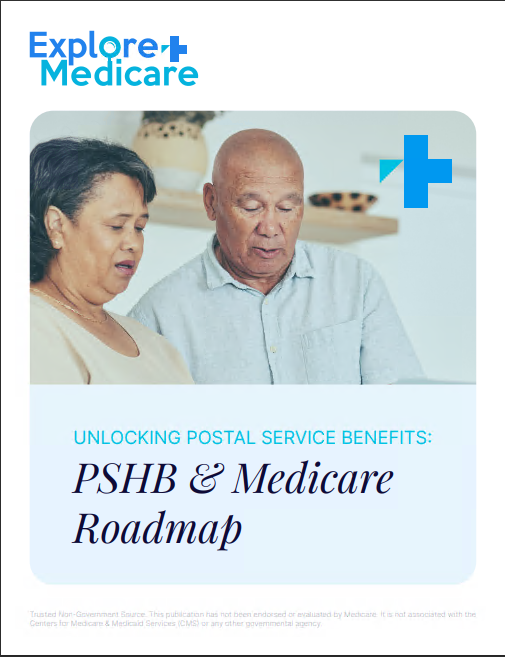Key Takeaways:
-
Timing is everything when signing up for Medicare. Missing deadlines can lead to penalties and delayed coverage.
-
Different enrollment periods exist for various situations, so knowing which one applies to you can help you avoid unnecessary costs and complications.
Understanding the Basics of Medicare Enrollment
Signing up for Medicare isn’t as simple as flipping a switch—it’s a process with different rules depending on your situation. Whether you’re approaching 65, retiring soon, or delaying enrollment, knowing the right time to sign up ensures that you don’t face coverage gaps or unnecessary penalties.
Medicare has several enrollment periods, each serving a different purpose. Some are automatic, while others require you to take action. Understanding how these work can help you make the best decisions for your healthcare needs.
When Do You Need to Enroll in Medicare?
The timing of your Medicare enrollment depends on your circumstances. Here’s what you need to know:
1. Initial Enrollment Period (IEP)
If you’re about to turn 65, the Initial Enrollment Period (IEP) is your first chance to sign up for Medicare. This period lasts seven months—starting three months before your 65th birthday month, including your birthday month, and ending three months after.
-
If you enroll before your birthday month, coverage starts the first day of your birthday month.
-
If you enroll during your birthday month or the three months after, your coverage will start the following month.
-
Waiting until the last three months of your IEP can cause a delayed start to your coverage.
Failing to enroll during this window can lead to late penalties, so it’s crucial to plan ahead.
2. Automatic Enrollment for Some Individuals
If you’re already receiving Social Security or Railroad Retirement Board (RRB) benefits, you’re automatically enrolled in Medicare Part A and Part B when you turn 65. Your Medicare card should arrive in the mail about three months before your 65th birthday.
However, if you’re not receiving these benefits yet, you’ll need to sign up manually. It’s important to verify your status early so you don’t miss deadlines.
3. Special Enrollment Period (SEP) for Those Still Working
Still employed and covered by employer-sponsored health insurance? You may qualify for a Special Enrollment Period (SEP) when you decide to retire or lose your employer coverage.
-
The SEP lasts eight months after your employer coverage ends.
-
This applies to those who have credible employer coverage from a company with 20 or more employees.
-
If your employer has fewer than 20 employees, you should sign up for Medicare during your IEP to avoid coverage gaps and penalties.
Some people assume employer insurance is always enough, but checking Medicare rules in advance can prevent coverage issues later.
4. General Enrollment Period (GEP) for Late Enrollees
Missed your Initial Enrollment Period and don’t qualify for a Special Enrollment Period? You can still enroll in Medicare, but you’ll have to wait for the General Enrollment Period (GEP), which runs from January 1 to March 31 each year.
-
Your coverage will begin on July 1 of that year.
-
Late enrollment penalties may apply, increasing your monthly Part B premium permanently.
Delaying Medicare enrollment can become costly over time, so understanding deadlines is key.
What If You’re Delaying Medicare?
Some people choose to delay Medicare enrollment, but that decision depends on whether you have credible health coverage.
-
If you have health insurance through your own or your spouse’s employer (and the employer has 20 or more employees), you may be able to delay enrolling in Part B without penalties.
-
If your employer has fewer than 20 employees, you generally need to enroll in Medicare at 65 since Medicare will become your primary insurance.
It’s always a good idea to confirm with your employer’s benefits administrator whether your current coverage allows you to delay Medicare without penalties.
How to Enroll in Medicare
If you need to sign up for Medicare, here’s how you can do it:
Online
Visit the Social Security Administration (SSA) website to complete your Medicare application. This is the fastest and most convenient method.
By Phone
Call Social Security at 1-800-772-1213 (TTY: 1-800-325-0778) to enroll over the phone.
In-Person
You can also visit your local Social Security office to apply in person.
Enrolling as soon as you’re eligible prevents unnecessary delays in coverage.
Understanding Medicare Late Enrollment Penalties
Failing to enroll in Medicare on time can lead to penalties that stick with you for life. Here’s what you need to know:
Part A Late Enrollment Penalty
Most people get Part A for free. If you have to buy Part A and don’t sign up when you’re first eligible, your premium can go up by 10% for twice the number of years you delayed enrollment.
Part B Late Enrollment Penalty
The Part B penalty adds 10% to your monthly premium for every 12-month period you were eligible but didn’t enroll. This penalty is permanent.
Penalties can add up significantly over time, so knowing when to enroll is crucial.
What Happens After You Enroll in Medicare?
Once you’ve successfully enrolled in Medicare, here’s what you can expect:
-
You’ll receive a Medicare card in the mail with your coverage details.
-
Your coverage start date depends on when you enrolled.
-
You can explore additional coverage options like Medicare Supplement (Medigap) plans or Medicare Advantage (but remember, no specific private plans are discussed here).
Choosing the Right Medicare Coverage
Medicare consists of different parts, each covering different healthcare services:
-
Part A – Covers hospital stays, skilled nursing facilities, and hospice care.
-
Part B – Covers doctor visits, outpatient care, and preventive services.
-
Part D – Provides prescription drug coverage.
If you need additional coverage, a licensed agent listed on this website can help you compare different Medicare options based on your healthcare needs.









